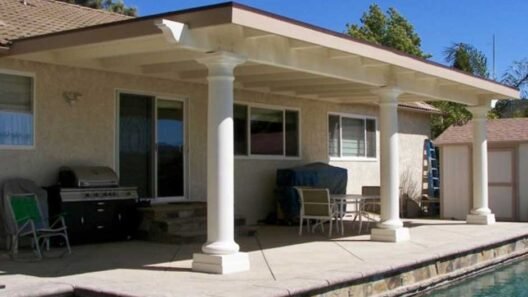Introduction
Owning a home represents a remarkable personal milestone with a long list of ongoing responsibilities. Maintaining proper insurance is fundamental among these, yet many overlook the intricate details of their homeowners’ insurance policies. Foremost among these details is liability coverage—a critical safeguard that can shield you from the often staggering costs of unexpected mishaps. It’s a layer of protection that can help safeguard your property and financial future, especially when everyday accidents lead to unexpected and expensive consequences. When considering just how many risks homeowners encounter daily, the importance of reviewing and comprehensively understanding your liability coverage becomes undeniable. For those looking for comprehensive solutions, The Hartford personal liability coverage offers options to strengthen your financial safety net. It could be an excellent starting point for anyone reevaluating their coverage.
Unfortunately, many homeowners mistakenly believe their basic policy automatically covers them for any mishap, no matter how severe or costly. This false sense of security often leads to disastrous outcomes when the fine print is not fully understood. Without carefully scrutinizing your coverage limits, you may be unaware of potentially expensive gaps, leaving you vulnerable to legal actions or financial distress. Taking time to delve deeply into your policy’s liability protection, and adjusting your coverage where needed, is an essential and proactive step to help keep your home and your hard-earned assets safe for the long term—even when life throws the unexpected your way.
What Is Liability Coverage?
At its core, liability coverage within a homeowners insurance policy protects you if someone is hurt on your property or if you accidentally damage someone else’s property—whether it be a neighbor, friend, or even a passing stranger. This crucial coverage is designed to shoulder major financial burdens, such as paying for medical bills, legal fees, settlement costs if you’re sued, and any court-ordered damages should you be legally responsible. For example, suppose a guest slips on an icy porch step and sustains an injury. In that case, liability coverage will typically handle their medical costs and legal expenses if a claim or lawsuit follows. This type of coverage is more than paying bills; it’s about peace of mind and knowing that you have support if something unfortunate happens on your property.
Furthermore, liability coverage typically extends beyond the physical boundaries of your property. Many insurance policies will also protect you and covered family members for incidents away from home, such as your child accidentally breaking an expensive item at a friend’s house. Understanding how broad and flexible your protection is can make a significant difference should you ever need to use it, ensuring you have a financial cushion for a range of situations, at home or beyond. This coverage aspect underscores why knowing your policy’s specific scope is crucial for effective risk management and preparedness.
Common Liability Scenarios
- Slip and Fall Accidents:Wet driveways, icy walkways, or uneven steps create hazards that can result in injuries and costly claims. Even something as innocent as a misplaced garden hose can lead to an accident that falls under your liability coverage.
- Dog Bites:Even well-trained pets can react unpredictably. You could be liable for medical bills and compensation if your dog bites someone. Dog-related claims are common and, in some cases, can result in lawsuits that far exceed basic policy limits.
- Tree Damage:When a large branch or an entire tree falls from your yard and damages a neighbor’s fence, car, or house, you may be responsible for repair costs. Storms or high winds can create damage beyond your property lines, highlighting the interconnected nature of liability risks.
These real-world scenarios highlight why homeowners cannot depend only on minimum liability coverage. Carefully analyzing potential exposures and adjusting coverage as needed is responsible and necessary. With medical care and legal fees rising, even a single incident can lead to six-figure settlements or judgments. According to a recent article in The New York Times, lawsuits involving severe injuries or significant property damage can easily exceed the standard limits of a basic policy—potentially putting your bank accounts, investments, or even your home at risk.
Assessing Your Liability Limits
Most standard homeowners’ policies start with liability protection of around $100,000, which sounds substantial initially but is often insufficient when measured against the real costs of medical accidents or significant legal disputes. Unfortunately, it’s not uncommon for damages and legal settlements to quickly escalate beyond this basic amount. Insurance specialists often recommend that homeowners increase their liability coverage to at least $300,000 or $500,000, particularly if you own higher-value property, have considerable savings, or regularly entertain guests. Anyone with assets to protect or a public profile that could increase their risk of being targeted in a lawsuit should carefully consider their coverage threshold—and review it regularly.
Self-assessment plays a critical role. Consider your net worth, the value of your home and car, any business interests, and your personal risk tolerance. If you’ve made home improvements, started renting out part of your property, or acquired valuable personal possessions, these changes should trigger a policy review. Planning for the unexpected, rather than reacting to it, helps shield your family from devastating financial consequences. Regular reviews mean you can catch these changes in real-time and adjust accordingly, protecting your immediate finances and long-term investments.
Regular policy reviews are indispensable and should be part of your annual financial checklist. As your life evolves and your property portfolio grows, the exposures you face also grow. Experts generally advise that homeowners review their policy coverage at least once a year or after major life events.
The Role of Umbrella Policies
For an extra security layer, many homeowners supplement their basic liability limits by purchasing umbrella insurance. An umbrella policy is designed to provide especially robust protection, starting at $1 million in additional coverage and going up from there. These policies are often quite affordable compared to the extensive peace of mind and financial shield they provide. When a claim’s settlement or lawsuit exceeds the limit of your homeowners policy, umbrella insurance kicks in to help fill the financial gap—covering legal defense expenses, damages, and more, up to its own limit. Even families who aren’t wealthy often find umbrella coverage a sensible decision, since the potential financial jeopardy from a single major claim can be ruinous.
Umbrella coverage is particularly important for anyone with features that increase liability risk, such as swimming pools, trampolines, or large dogs. In today’s litigious climate, these extra policies have become extremely valuable, guarding your savings, investments, and future earnings. For the relatively low cost compared to the protection provided, an umbrella policy is one of the smartest risk management tools you can have as a homeowner.
Regular Policy Reviews
Your liability risk profile can shift dramatically as your life and circumstances change. Simple events—such as expanding your family, undergoing home renovations, or investing in expensive personal possessions—can impact your liability exposure. Even external factors, like changes in local laws or property values, can alter the risk environment for homeowners. Scheduling annual conversations with your insurance provider or agent ensures that your policy is always current and reflects your real-world needs. By staying proactive and alert to changes, you prevent nasty surprises when you need coverage most and ensure your policy evolves alongside your lifestyle. Experts note that updating your coverage every several years—or whenever you undergo major life changes—is a wise rule of thumb and can save considerable stress and financial loss over time.
Final Thoughts
Understanding, reviewing, and optimizing your liability insurance limits is fundamental to responsible homeownership. Adequate liability coverage represents your first line of defense against the unpredictability of life—protecting you from the potentially devastating financial impact of accidents and lawsuits. Don’t wait until after an incident to learn you’re underinsured or exposed to risk. Instead, assess your liability needs, explore additional protections like umbrella policies, and schedule regular policy reviews. By taking these proactive steps, you secure your physical property, peace of mind, and long-term financial security. Ensuring you have the right coverage is an investment in your home, family, and future as a confident and well-prepared homeowner.








